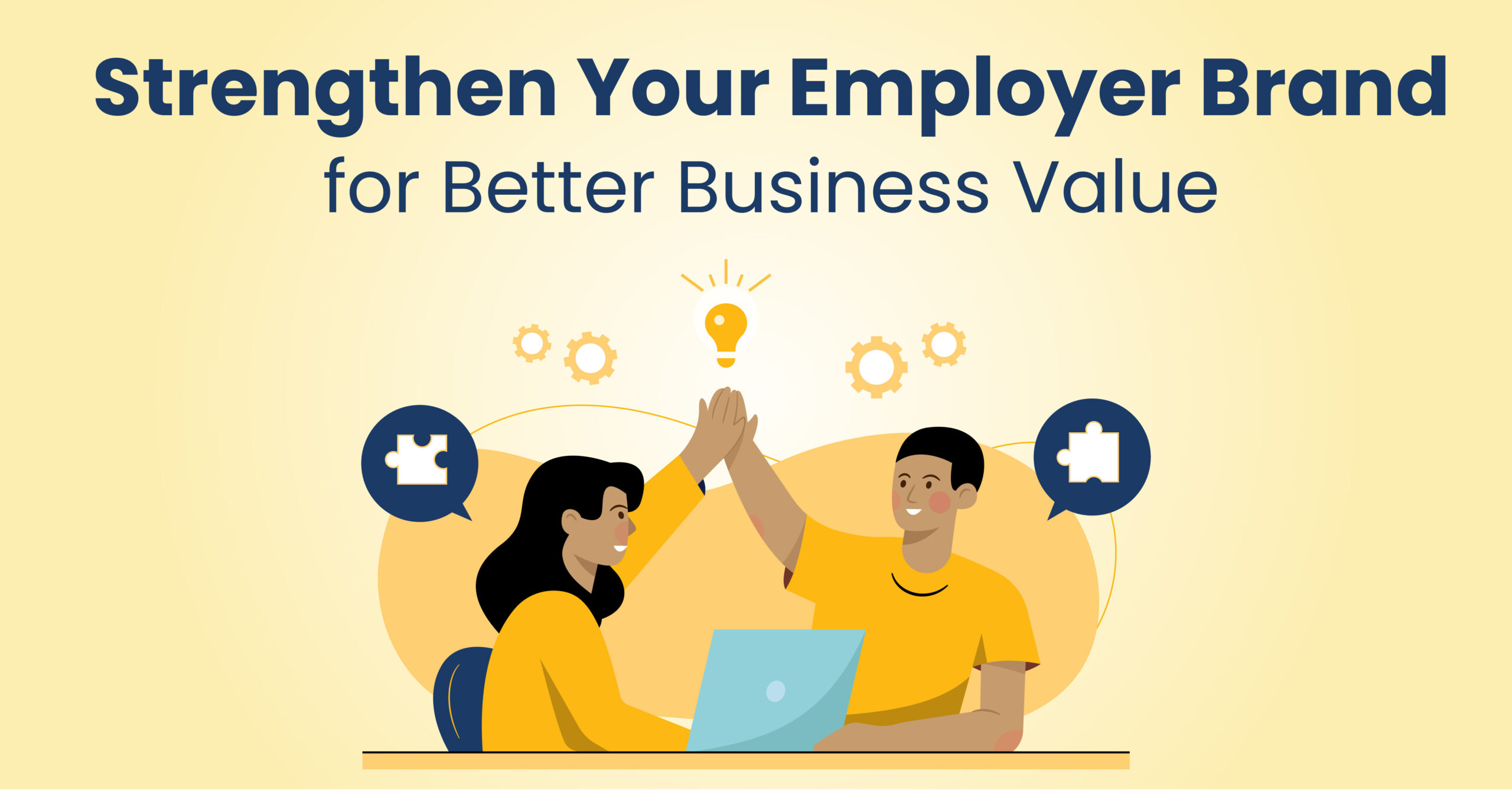An evolving Employer Brand might be the critical competitive advantage your brand needs today. Did you know that a healthy investment in employer branding can reduce your employee turnover by 28%? In addition, with remote and hybrid models of work becoming the norm, brands need to reinvent strategies to retain and attract the best talent.
Imagine you are a senior leader at your company managing a team of employees, and each member has a unique set of expectations. In the sage of custom fits, you need to discover what set of values your employees seek and amplify those values back to them. Gone are the days of one size fits all policies and programs. And that is only half of the story.
What about the future employees whom you desperately want to attract, hire and retain? They come with their own set of expectations as well.
Employer branding initiatives that focus on the employee lead to higher effective brand recognition, positioning you as an attractive destination for the best talents. To keep yourself abreast of the ever-changing trends, here are a few hand-picked Employer Branding initiatives you can look forward to in 2022.
Align your Company Policies with EVP
Outdated Employee Value Propositions (EVP) no longer attract talent. It is high time that companies align their EVP and company policies with changing needs. The constant focus should be on matching employee expectations with company values as a part of daily interactions with teams. With the workforce becoming more digitized, people yearn for a positive environment with a higher engagement rate.
Gartner Report highlights only 31% of HR leaders feel employees are satisfied with their company’s EVP. Therefore, companies need to look beyond benefits and perks to enhance employee experience. For example, easily accessible information, both structured and unstructured, could be a morale booster along with keeping track of employee expectations. In addition, open, transparent and periodic communication across levels, channels and platforms can foster an environment of trust and belonging. After all, communication is a vital ingredient in relationship building.
Address the Issues that matter now, right now!
One of the key factors driving the Great Resignation is the culture of overwork, often leading to mass burnout. Before Covid, perks including coupons, travel packages, and discounts were a crucial part of a company’s EVP. However, the shift to remote and hybrid work brought a much-needed focus on replacing the long-standing perk-based EVP models with something more sustainable and meaningful.
Hours of zoom calls and meetings can be exhausting, taking a toll on one’s physical and mental health. According to a study, only 36% of the workforce is actively engaged in the US alone. Reinventing the EVP to align with changing demands is no more an option but imperative to attracting and retaining talent. More and more people prefer remote work, hybrid work and flexible hours. Are your policies ready for these challenges?
Employer Brand for value-based Leadership
DEI (Diversity, Equity and Inclusion) is talked about by many but often acted upon by few. With over 79% of companies allocating more funds to raise their DEI budget, diversity, equity and inclusion will be crucial in the coming months. However, is allocating a budget and issuing out inclusion policies enough?
DEI initiatives are no more a nice to have option. They are a necessity. Today’s employees prefer to work at socially aware organizations that value each employee for their unique abilities. Therefore, a critical approach is to provide adequate opportunities for each employee to participate fully and grow equally. An essential first step that many companies are practicing is removing all bias opportunities from the hiring process. Another step could be reexamining each mandatory requirement on the Job Description and questioning its validity. For example, parameters such as language, age, gender, work hours, the workplace could subconsciously foster inherent prejudices.
Flexibility, Flexibility and some more Flexibility
The pandemic inadvertently provided employers and employees glimpses into greater flexibility regarding time and place of work. Gartner’s survey shows that 43% of employees stated that flexibility in working hours resulted in greater productivity. Moreover, 30% of respondents said that lesser or no time spent commuting yielded more significant results in their work.
Despite some companies preferring employees to come back to the office and some employees choosing to go back to the office, flexibility is here to stay. As we advance, the workplace will see enhanced flexibility in policies, compensation, communication, hierarchies and more. And more and more of Generation Z will prefer employer brands that offer greater flexibility.
Employer Brand for 2022 and Beyond: Future-Forward
Employee Value Propositions come to life when leaders manifest communication in action. Employees want to be valued and guided in overcoming obstacles, giving way to a holistic work environment.
There are no two ways about it. The two long years of the pandemic have questioned everything, and companies need to re-adjust, re-align and re-imagine their organizations. After all, continuous, credible and transparent communication is the way to build trust.


